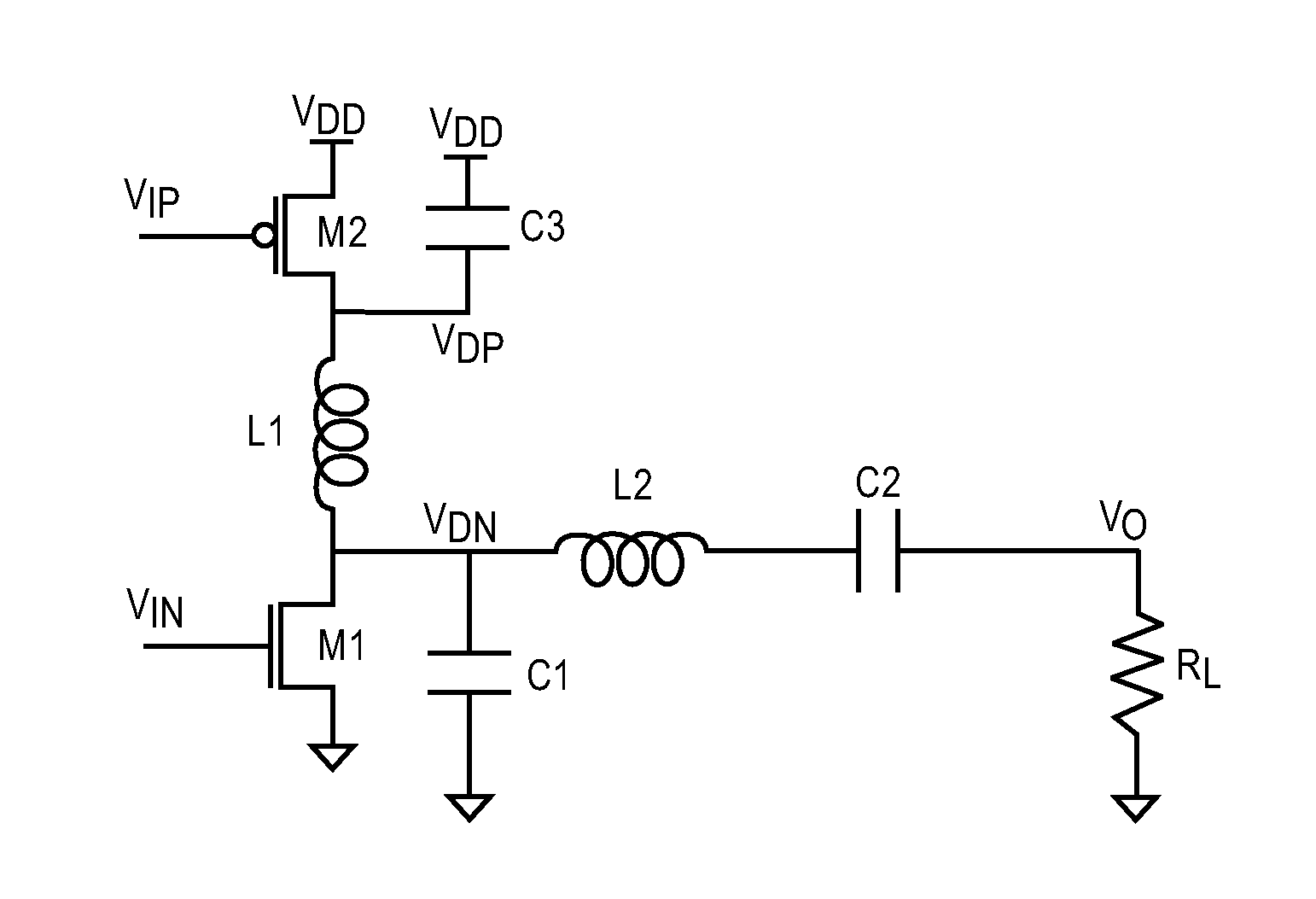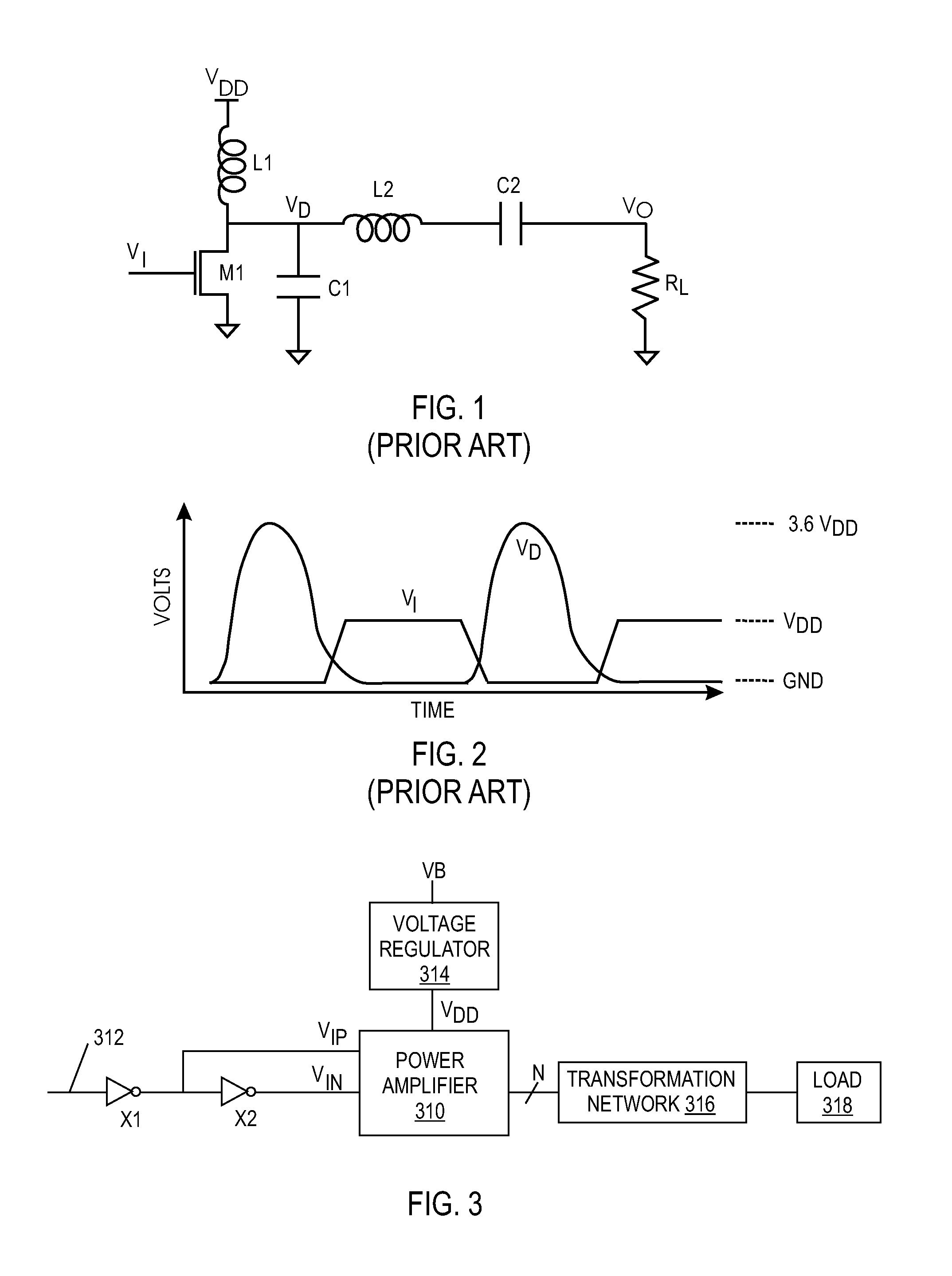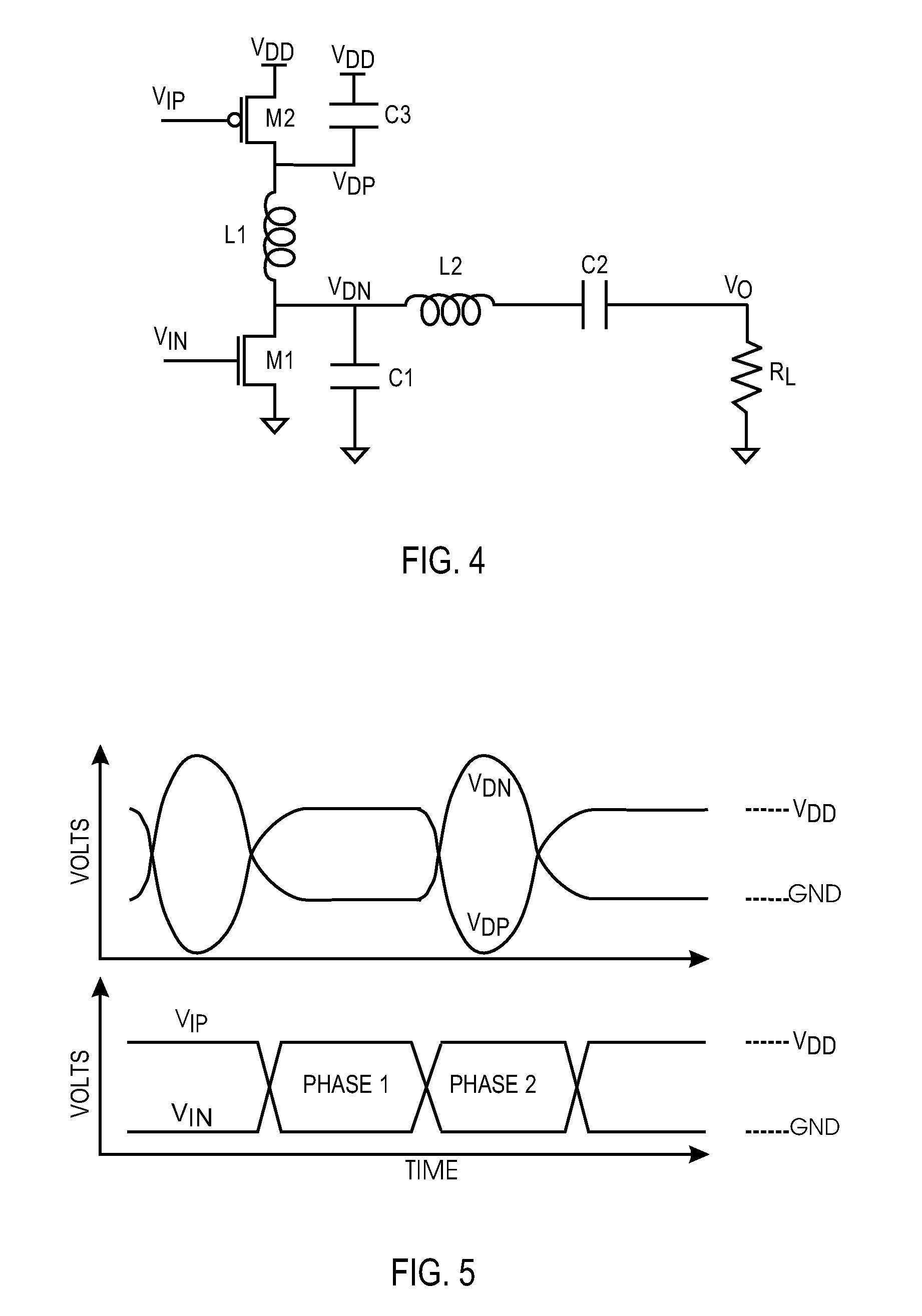Method and apparatus for stabilizing RF power amplifiers
a power amplifier and stabilizing technology, applied in the field of power amplifiers, can solve the problems of not being well suited to traditional power amplifier designs, using differential circuits, and not being well suited to certain device technologies, etc., and achieve the effect of less attenuation and stabilizing the rf power amplifier
- Summary
- Abstract
- Description
- Claims
- Application Information
AI Technical Summary
Benefits of technology
Problems solved by technology
Method used
Image
Examples
Embodiment Construction
[0062] In order to provide a context for understanding this description, the following illustrates a typical application of the present invention. A power amplifier of the present invention may be used as an amplifier for use with a wireless transmission system such as a wireless telephone or other device. The invention may also be applied to other applications, including, but not limited to, RF power amplifiers. In a wireless device such as a cellular telephone, the device may include a transceiver, an antenna duplexer, and an antenna. Connected between the transceiver and the antenna duplexer is an RF power amplifier for amplifying signals for transmission via the antenna. This is one example of an application of a power amplifier of the present invention. Of course the invention may be used in any other application requiring a power amplifier. In the case of a wireless telephone application, the invention may be applied to GSM or other constant envelope modulation systems.
[0063]...
PUM
 Login to View More
Login to View More Abstract
Description
Claims
Application Information
 Login to View More
Login to View More - R&D
- Intellectual Property
- Life Sciences
- Materials
- Tech Scout
- Unparalleled Data Quality
- Higher Quality Content
- 60% Fewer Hallucinations
Browse by: Latest US Patents, China's latest patents, Technical Efficacy Thesaurus, Application Domain, Technology Topic, Popular Technical Reports.
© 2025 PatSnap. All rights reserved.Legal|Privacy policy|Modern Slavery Act Transparency Statement|Sitemap|About US| Contact US: help@patsnap.com



